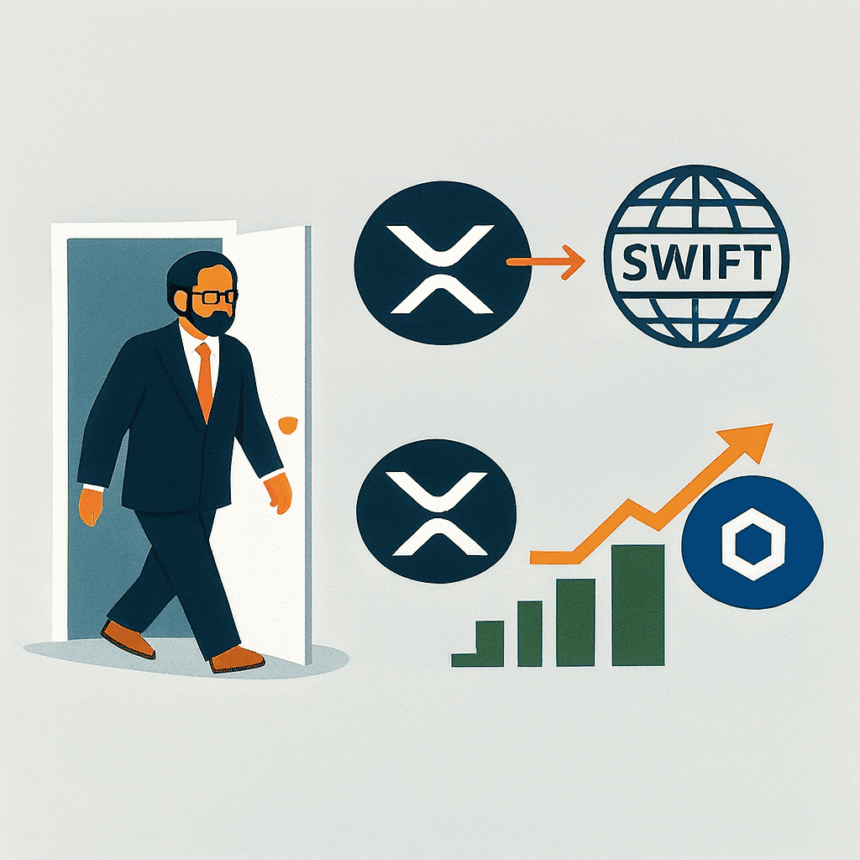In a significant update for the cryptocurrency sector, David Schwartz, the CEO of Ripple, has announced his departure from his role after over a decade with the company. Schwartz made the announcement through a post on social media platform X on September 30, 2025, sharing his intent to focus on family and personal interests.
While stepping down, Schwartz emphasized his commitment to the XRP community, declaring, “But be warned, I’m not going away from the XRP community. You haven’t seen the last of me (now, or ever).” He will continue to hold a position at Ripple as an advisor and assumes the title of CTO Emeritus, allowing him to stay engaged with the company at a strategic level while pursuing personal projects.
Reflecting on his extensive career, Schwartz noted, “As happens in one’s life, I’ve been taking stock of my last 40 years. It’s been a wild ride.” From his early days consulting for the NSA to coding the XRP Ledger, his journey has been marked by significant milestones in the cryptocurrency domain. Schwartz plans to further his involvement by running his own XRPL node and collaborating with developers to innovate beyond Ripple’s traditional scope, including applications that utilize XRP for purposes beyond payments.
Ripple’s current CEO, Brad Garlinghouse, expressed deep gratitude towards Schwartz, describing him as a “true OG in crypto” with the insight to envision possibilities that others overlooked. He remarked, “Thank you, David, for everything you’ve done for the industry, for Ripple, and for the XRP Ledger. We are all forever grateful.”
In related news, a lively debate arose among crypto enthusiasts on X after CoinRoutes founder Dave Weisberger questioned why XRP holds a market valuation significantly higher than Chainlink’s (LINK), despite LINK having substantial partnerships and clearer revenue models. Weisberger, who holds investments in both tokens, implied that XRP’s valuation could be inflated, prompting pushback from XRP supporters who pointed to XRP’s higher transaction volume and its role as a native asset within a Layer 1 blockchain.
Critics of the comparison noted that XRP serves as a foundational currency within its network, while LINK operates as a middleware token for data. Former Ripple engineer Matt Hamilton highlighted the futility of the comparison, stating, “Trying to compare their value is sort of meaningless.”
While the discussions may not have reached a definitive conclusion, they underscored varying perspectives within the crypto community. Preference for foundational blockchain assets or utility tokens tied to revenue-generating systems seems to be the root of differing opinions.
On another front, Ripple has made strides in integrating its technology with traditional banking systems by connecting its Interledger Protocol (ILP) with SWIFT, the global payments network. This connection could enhance XRP’s utility for international transactions, as the ILP is designed to facilitate seamless interactions between disparate financial systems without requiring a complete overhaul.
The initiative aims to align Ripple’s technology with current financial infrastructures, acknowledging that transitioning to a single payment system may not be feasible. By linking legacy systems to the ILP, Ripple hopes to accelerate XRP’s adoption and increase its significance in mainstream finance. The ILP’s compatibility with the global ISO 20022 messaging standard further substantiates Ripple’s goal of enabling secure and efficient cross-border transactions.
As Schwartz transitions from his executive role to a more advisory capacity, the broader implications of Ripple’s latest developments and XRP’s positioning within the global financial ecosystem remain significant topics of discussion.







